Unique livestock housing solution for Island crofter
As technology and innovation continue developing at a rapid pace, there’s a constant drive, particularly in farming, to maximise efficiency.
.jpg) |
|
Donald is constructing a new Polycrub on his croft
|
Often this comes at a high financial price, but occasionally, a cost-efficient solution comes along.
There’s no denying that farmers around the globe are bombarded with the latest gizmos and technical advances. However, this technology often involves a farmer investing heavily financially, with long payback terms taking the fizz out of the idea. Sometimes the best inventions are the simplest ones: that don’t cost a bomb and will actually see the farmer paying back in their lifetime.
That’s exactly what a young crofter on the Isle of Lewis (off the coast of Scotland) discovered when he needed new livestock housing. Running a croft, otherwise known as a small farm holding, on the Isle of Lewis is not a task for the faint-hearted, especially when 50mph Atlantic gales sweep across the island.
Social way of life
 |
|
A few breeds of sheep are kept on Donald’s croft
|
Donald MacSween, 36, operates a diverse croft on the north-west side of the Isle of Lewis hosting a variety of livestock, including pigs, poultry, sheep, and cattle. In fact, he’s operating three crofts side by side with an average size of seven acres each and has access to more than 50,000 acres of common land.
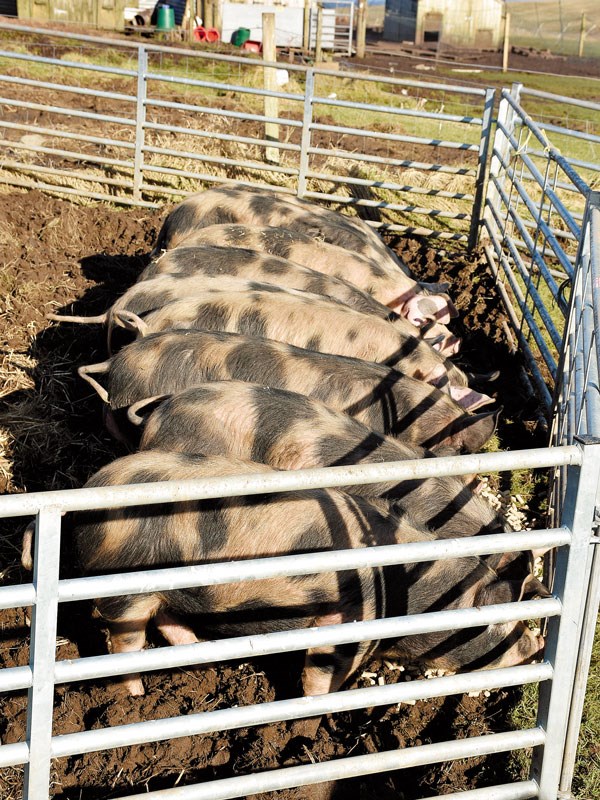 |
|
Feeding up the Gloucestershire Old Spot pigs for slaughter
|
Donald has around 130 sheep mostly of the Blackface breed but also including 40 Hebridean sheep, 25 Shetland sheep, and a number of larger Texel and Beltex crosses.
 |
|
Donald keeps 500 laying hens for extra income
|
He also stocks three Highland cows, three smaller heifers, 14 Gloucestershire Old Spot pigs, including four sows and a boar, as well as 500 laying hens. "Crofting is a good social way of life," says Donald. "We all work together to get things done. I’m a crofter though, not a farmer; it’s different."
Economically viable
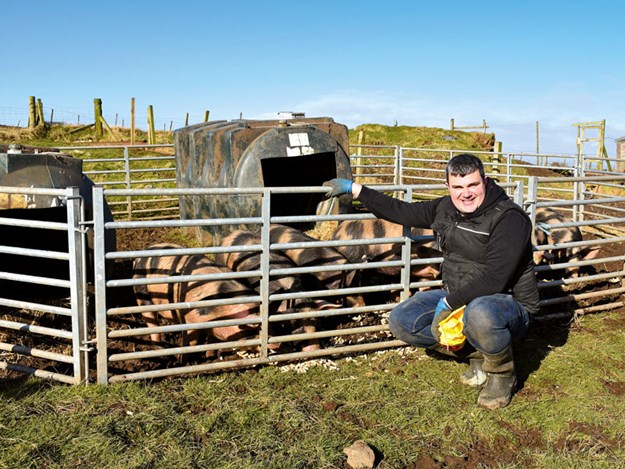 |
|
Donald rears his pigs for slaughter and sale
|
As most crofters will say, this way of life doesn’t generate a huge turnover, but Donald’s business is an example of a more economically viable one in crofting. "I have to make the crofts work," he says. "We do receive financial assistance from the government, together with sound advice from SAC Consulting to help increase the viability of the crofts.
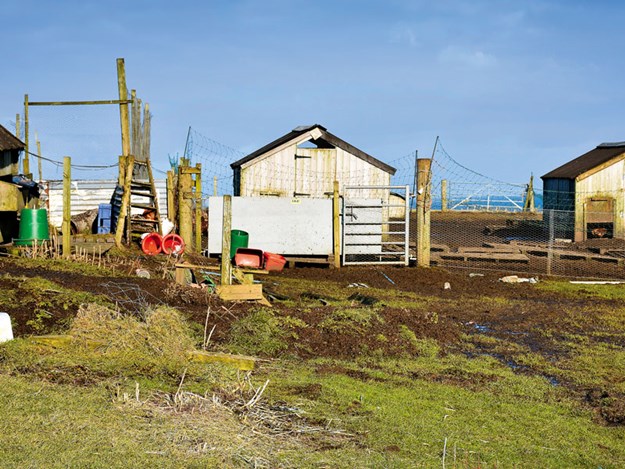 |
|
Eggs are collected daily and sold to local shops
|
"I produce meat and eggs on my croft, which I sell locally and around Glasgow, Inverness, and Aberdeen. I try to finish around 25 lambs each year and at the moment, I have 14 pigs ready for slaughter.
"My father helps out with the hens collecting around 300 eggs per day, which we sell to customers on Lewis for £1.65 per half dozen to the shops. "Our fattener pigs were born last October and are ready now. They should kill out at 40kg deadweight. We kill them at the local abattoir, butcher them into cuts, and sell for £11 per kilogramme," he says.
Donald also has wool from his sheep spun, which he then weaves into the famous Harris tweed and receives £95 per metre for it. Even though the average croft receives £1500 to £2000 each as an average Basic Payment subsidy, crofters mostly have a number of streams of income in order to maintain their lifestyle.
Investing in anything that requires a lot of capital on a croft, such as livestock housing, is difficult but there are many schemes running that help the crofters financially. Crofters who previously used the familiar polytunnels to grow veg in soon found they were no match for the strong winds as they often watched them fly off into the distance.
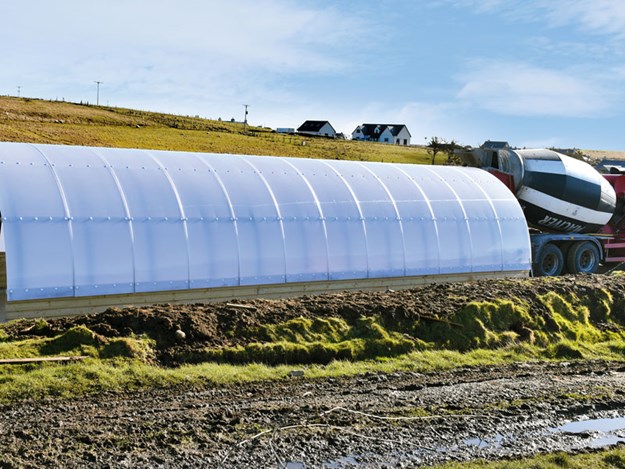 |
|
A new Polycrub is being erected on Donald’s crof
|
However, a new solution called a Polycrub has been introduced to suit such conditions and is becoming popular on the Outer Hebrides, boosted by significant grants the islanders receive to help construct them.
Donald has pioneered the way for crofters in a more challenging climate, showing them that they have cheaper options available that can withstand these challenges. He is one of many crofters who were successful, with the assistance of SAC Consulting Stornoway, in obtaining a grant for his units, which attests to the affordability challenges.
This has encouraged a wave of interest in his progress and encouraged others to consider these options as well. After attending a workshop organised by SAC Consulting on Polycrubs, Donald decided to erect one as a cheaper and more diverse means of livestock housing.
Strong and steady
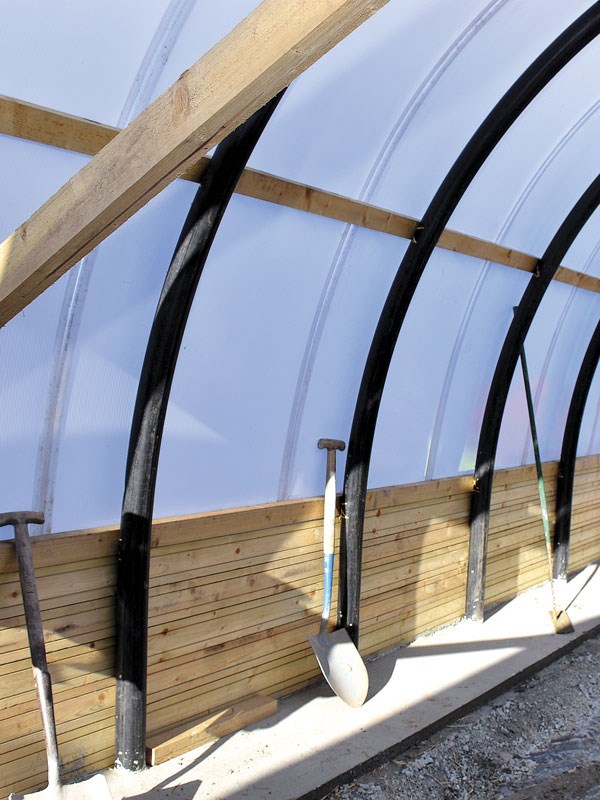 |
|
Piping used on fish farms is recycled to build Polycrubs
|
Made in Shetland, a Polycrub is a structure with a frame made from redundant pipes once used in the fishing industry. During the last few years, tens of kilometres of waste pipe have been diverted from landfill in Shetland and recycled into making Polycrubs.
The Polycrub is covered using thick polycarbonate because this material has the longest lifespan of anything available and is the most durable for harsh climates. They have also been tested to withstand 120 miles per hour winds which make them perfect for use in the Outer Hebrides.
 |
|
The Polycrub structure is tested to withstand strong winds
|
Mostly used for growing vegetables in, Donald decided a Polycrub would be ideal to lamb his sheep in and to house his pigs. "I decided to build one measuring 12.7 metres by four metres," says Donald. "It has a hard floor, which took five cubic metres of concrete to fill.
"Double doors at both ends of the unit allow for both easy access and for good ventilation to enter. The polycarbonate has a 15-year warranty but is already lasting double that time," he adds. The Crofting Agricultural Grant Scheme (CAGS) provides grants for crofters to make improvements to their crofts and help to sustain their businesses.
Crofters under 41 in the Less Favoured Areas receive an 80% grant up to a maximum of £25,000 over a two-year period or 60% in non-LFA. Donald intends to add a second Polycrub to his croft to store animal feed, straw, and machinery in also with help from the CAGS.
Find farming equipment for sale in NZ
Keep up to date in the industry by signing up to Farm Trader's free newsletter or liking us on Facebook












.jpg)
.jpg)
.jpg)

